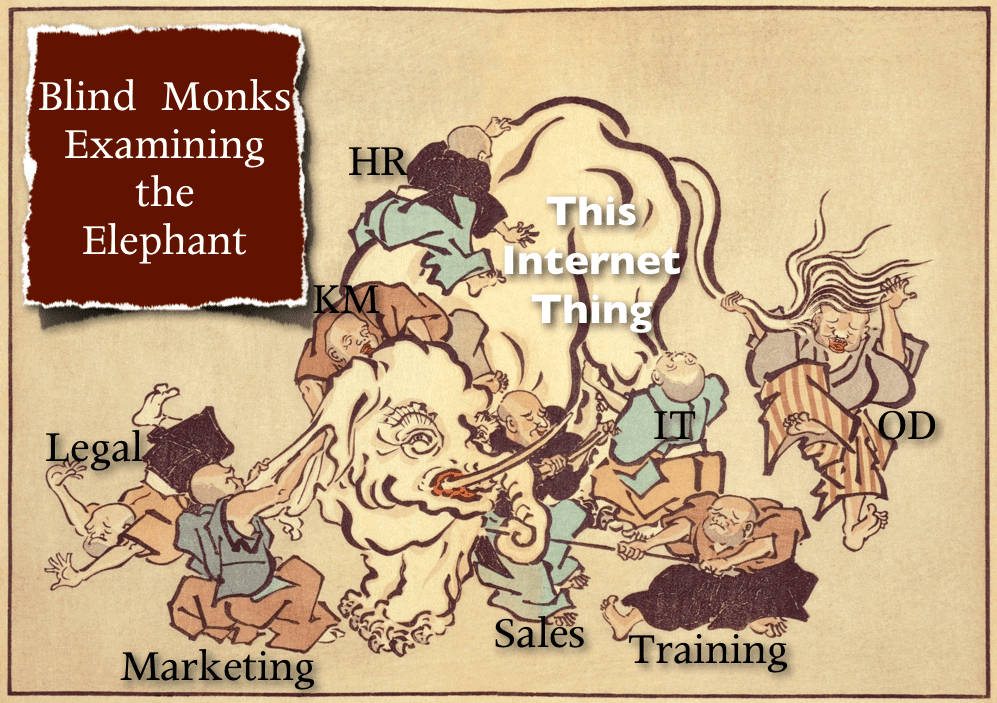Sure of their qualities and demanding praise, more go to ruined fortunes than are raised.
Alexander Pope 1688-1744, British Poet and critic
The Rise Of China Or Is It Just A Dream?
Updated Aug 2023
As of 2023, China’s reserves have swelled to an astounding $3.2 trillion, with U.S. Treasuries accounting for a significant portion. This financial arsenal underscores China’s economic prowess and potential to influence global markets. The U.S., despite its economic might, finds itself in a delicate balancing act, trying to maintain a semblance of control over China’s policy decisions. However, the reality is that the U.S.’s ability to exert substantial pressure on China has been significantly diminished in recent years.
In this era, where China’s rise is reshaping the global economic landscape, we delve into the complex dynamics at play. This exploration seeks to uncover the intricate web of factors driving China’s ascent and the potential challenges it may face. From demographic shifts to economic imbalances and from geopolitical ambitions to internal struggles, the story of China’s rise is one that warrants meticulous examination.
While China’s meteoric economic growth has captured the world’s attention, it is essential to discern whether this ascent is sustainable or merely a fleeting dream. We navigate through the data, narratives, and analyses to provide a nuanced perspective on the trajectory of this global giant.
China’s Economic Growth
China’s economic growth has been nothing short of phenomenal. Over the past few decades, it has transformed from a largely agrarian society to a global manufacturing powerhouse. Its GDP has grown at an average rate of about 10% per year, unprecedented in modern history. This rapid economic development has lifted hundreds of millions of people out of poverty, creating a burgeoning middle class with increasing purchasing power. The country’s economic policies, focused on export-led growth and massive infrastructure development, have played a crucial role in this transformation. However, this growth model has also led to significant environmental and social challenges, including pollution, income inequality, and an ageing population.
China’s Global Influence
China’s economic rise has significantly increased its global influence. It is currently the world’s largest trading nation, surpassing the U.S. in total trade volume. China’s Belt and Road Initiative, a massive infrastructure project spanning Asia, Africa, and Europe, has reshaped global trade routes and geopolitical dynamics. This initiative aims to enhance connectivity and promote economic cooperation among participating countries.
China’s influence is also growing in international institutions. It is the third-largest contributor to the United Nations budget and has increased its voting power in the International Monetary Fund. Additionally, China has been actively engaging in regional and global initiatives, such as the Asian Infrastructure Investment Bank (AIIB) and the Shanghai Cooperation Organization (SCO), further expanding its influence.
However, China’s growing influence has also raised concerns among some countries. There are debates about its intentions and the implications for global governance, particularly regarding human rights, intellectual property rights, and territorial disputes.
The U.S.-China Power Dynamics
The rise of China has significantly altered the U.S.-China power dynamics. The U.S., long the world’s sole superpower, now competes strategically with China. This competition extends beyond economics to technology, military, and ideology. The U.S. has responded by implementing policies to contain China’s rise, including trade tariffs and restrictions on Chinese technology companies. However, these measures have had limited success as China’s economic and technological capabilities continue to grow. The U.S.-China relationship is now characterized by a delicate balance of cooperation and competition, with both countries recognizing the need for collaboration on global issues like climate change and pandemic response while competing for global influence.
China’s rapid economic growth and technological advancements have allowed it to challenge the U.S. in various domains. Regarding GDP, China has become the world’s second-largest economy, trailing only behind the United States. China’s military modernization efforts have also raised concerns in the U.S. as it seeks to expand its influence in the Asia-Pacific region.
The U.S. has taken steps to counter China’s rise, such as implementing trade tariffs and restrictions on Chinese technology companies like Huawei. The U.S. government has also sought to strengthen regional alliances and partnerships to maintain its influence and counterbalance China’s growing power.
However, despite these efforts, China’s economic and technological capabilities continue to expand, challenging the U.S.’s traditional dominance. The U.S.-China relationship is complex and characterized by cooperation and competition. Both countries recognize the need to cooperate on global issues like climate change and pandemic response while competing for influence in various areas.
It is important to note that the dynamics between the U.S. and China are constantly evolving, and the balance of power between the two nations will continue to shape global geopolitics.
The Yuan’s Detachment: A Global Ripple Effect
The Yuan-Dollar peg has been a cornerstone of China’s economic policy for decades. China has maintained its export competitiveness by keeping the Yuan undervalued against the dollar, fueling its rapid economic growth. However, this policy has also led to significant trade imbalances, with China accumulating massive foreign exchange reserves, primarily in U.S. dollars. The U.S. has long advised China to unpeg the Yuan from the dollar, which could have far-reaching implications.
If China were to heed this advice and unpeg the Yuan from the dollar, it could lead to the Yuan appreciating by approximately 30%. This significant appreciation would ripple effect on the global economy, causing various impacts. One of the potential consequences would be the possible increase in the prices of imported goods from China. This could result in inflationary pressures, affecting not only the prices of everyday items but also the operations of businesses that rely on Chinese imports.
For example, the “99 cents” stores that many consumers are accustomed to might need to rebrand as “Dollar Plus” or even “Two or Three Dollar Stores” due to the increased costs of imported goods. This would reflect the impact of the Yuan’s appreciation on the pricing of products in the global market.
It is important to note that the exact magnitude and extent of the ripple effect would depend on various factors, including the response of other countries and the overall state of the global economy. The interplay between currency valuations, trade dynamics, and inflationary pressures is complex and can have wide-ranging implications.
The Impact of Yuan Appreciation
If China were to let the Yuan appreciate by approximately 30%, as suggested by some economists, it would have far-reaching implications. It would make its exports more expensive for China, potentially hurting its manufacturing sector. However, it could also help rebalance its economy towards domestic consumption and reduce its reliance on exports. A stronger Yuan could lead to higher import prices for the global economy, potentially causing inflation. This could particularly impact low-cost retailers relying on cheap imports from China.
The ripple effect of a Yuan appreciation would be felt globally. Countries that rely on Chinese imports, like the U.S., could see inflationary pressures as the cost of goods rises. This could lead to higher consumer prices, impacting the purchasing power of consumers. Retailers, particularly those offering low-cost goods, could be forced to increase their prices, potentially leading to a rebranding of “99 cents” stores to “Dollar Plus” or even “Two or Three Dollar Stores.” However, it could also provide opportunities for other low-cost manufacturing countries to increase their market share.
The future of the Yuan is a topic of intense debate. While there are clear benefits to a more flexible exchange rate, the risks are also significant. China’s leadership has indicated a willingness to move towards a more market-oriented exchange rate, but the pace and extent of this reform remain uncertain. Regardless of the path chosen, the impact of China’s currency policies will continue to reverberate globally, underscoring the country’s growing economic influence.
The U.S. Manufacturing Base: A Fading Giant
The U.S. manufacturing sector, once the backbone of the American economy, has been in a state of decline for several decades. This decline has been driven by a combination of factors, including increased global competition, the offshoring of production to countries with lower labour costs, and technological changes. As of 2023, this trend has continued, with the U.S. manufacturing base shrinking further. This has left the U.S. more reliant on imports, making it more vulnerable to price increases from significant trading partners like China.
Automation has played a significant role in transforming the U.S. manufacturing sector. Technological advancements have enabled automation of many manufacturing processes, leading to increased productivity and job losses. While automation can lead to cost savings and improved product quality, it also contributes to the decline of traditional manufacturing jobs. This has significant social and economic implications, including increased income inequality and the erosion of the middle class.
The Shift to a Service-Oriented Economy
Concurrent with the decline of manufacturing, the U.S. has shifted towards a more service-oriented economy. Services now account for a significant portion of U.S. GDP and employment. Several factors, including technological advancements, changes in consumer preferences, and the offshoring of manufacturing jobs, have driven this shift. While the service sector offers new opportunities, it also presents challenges, including the need for workforce retraining and the potential for increased income inequality.
Despite the challenges, there is potential for a resurgence in U.S. manufacturing. Technological advances, including automation and 3D printing, could make domestic manufacturing more competitive. There is also growing recognition of the need to invest in manufacturing to ensure economic resilience and national security. However, achieving this will require concerted efforts, including investment in infrastructure, education, research and development, and policies supporting domestic manufacturing and fair trade.
China’s Technological Leap: A New Global Leader?
China’s technological advancements in recent years have been remarkable. The country has made significant strides in artificial intelligence, 5G technology, quantum computing, and biotechnology. These advancements result from substantial investments in research and development, a large and growing pool of highly skilled talent, and supportive government policies. China’s tech giants, including companies like Huawei, Alibaba, and Tencent, are now competing on the global stage, challenging the dominance of U.S. tech firms.
China’s tech giants are crucial in the country’s technological leap. Companies like Huawei are leading the way in 5G technology, while Alibaba and Tencent are pioneering advancements in e-commerce and digital payments. These companies are not only transforming China’s domestic market but are also expanding their global footprint. Their success is a testament to China’s ability to innovate and compete in high-tech industries.
The Impact on China’s Economy
The technological leap has had a profound impact on China’s economy. It has fueled economic growth, created high-paying jobs, and spurred innovation. It has also helped China move up the value chain, shifting from low-cost manufacturing to more high-tech industries. This has bolstered China’s economic standing and has made the dream of its rise more of a reality.
China’s technological advancements have significant global implications. They challenge the U.S.’s dominance in technology and could reshape the global tech landscape. They also raise important questions about tech governance, data privacy, and cybersecurity. As China continues to advance technologically, it will be crucial for other countries to understand and respond to these developments. This will require technological innovation, thoughtful policy-making, and international cooperation.
The Belt and Road Initiative: China’s Global Ambition
The Belt and Road Initiative (BRI) is a grand vision by China to enhance regional connectivity and foster economic growth across Asia, Europe, and Africa. It involves building a vast network of infrastructure projects, including railways, roads, ports, and energy pipelines. As of 2023, the BRI has seen significant progress, with numerous projects underway or completed. This initiative is a testament to China’s global ambition and its desire to play a more prominent role in international affairs.
The BRI has allowed China to extend its economic influence across continents. By financing and building infrastructure in participating countries, China has created new avenues for trade and investment. This has benefited China’s economy and helped it forge stronger economic ties with countries along the BRI routes. However, it has also led to concerns about debt sustainability in some participating countries, highlighting the complex dynamics of China’s growing economic influence.
Technological Advancements and BRI
China’s technological advancements have played a crucial role in the BRI. From using advanced construction techniques to implementing smart city solutions, China’s tech prowess is evident in many BRI projects. This has enhanced the efficiency and effectiveness of these projects and provided a platform for Chinese tech companies to showcase their capabilities on a global stage.
The progress of the BRI, coupled with China’s technological advancements, paints a picture of a rising China that is more than just a dream. It underscores China’s ambition to be a global leader and its ability to realize this ambition. However, it also raises important questions about the implications of China’s rise for global governance, economic stability, and geopolitical dynamics. As China continues to rise, understanding and responding to these developments will be critical for policymakers and businesses worldwide.
Is China’s Rise Just a Dream?
While China’s rise has been impressive, it is not without challenges. Its economic growth has slowed in recent years, and it faces significant demographic challenges, including an ageing population and a declining workforce. Its debt levels are also high, raising concerns about financial stability. Moreover, its political system, characterized by a lack of transparency and limited individual freedoms, has sparked domestic and international criticism. These challenges, coupled with the strategic competition with the U.S., raise questions about the sustainability of China’s rise. However, given its economic and technological capabilities, it is clear that China will continue to play a significant role in global affairs.
In conclusion, the rise of China is not merely a dream but a reality that is unfolding before our eyes. The U.S., once the unchallenged global leader, now finds itself in a complex dance with the dragon. The outcome of this dance will undoubtedly shape the global economic landscape in the years to come.
Now, let’s embark on a brief historical journey. While this article was initially penned years ago, subsequent updates have rendered the content somewhat historical. Nevertheless, it is an essential reminder of China’s remarkable ascent and its progress. It also underscores the age-old adage that those who neglect to learn from history are destined to repeat it.
The top 10% in China own 45% of the nation’s wealth.
In China, the wealthiest 10% of the population holds a substantial 45% of the nation’s wealth, while the poorest 10% controls a mere 1%. These figures might astonish most Americans. However, the sobering reality is that the situation is even more pronounced in the United States. Here, the top 1% possesses one-third of the country’s wealth, and the wealthiest 5% exert control over more than 50% of the nation’s riches. On the opposite end of the spectrum, the extremely impoverished in the U.S. have negligible or no wealth.
Those burdened with debt will face severe consequences if deflation hits the U.S. (likely to follow a hyperinflationary phase). Given the negative savings rate in the U.S., it’s reasonable to assume that a significant portion of the population, perhaps as much as 75%, will endure a phase one could aptly describe as “a harrowing ordeal.” The timing of this occurrence remains uncertain, but it is inevitable, and with the ongoing surge in inflationary pressures, the day of reckoning approaches ever closer.
China’s Spectacular Consecutive Years of Growth
A significant portion of this situation indeed stems from malinvestment. Steel mills and aluminium foundries are overproducing and stockpiling materials far beyond what they can realistically expect to sell. Furthermore, they continue to expand and build even more extensive facilities. If this surplus of aluminium, steel, iron, copper, and other materials were ever released onto the open market, it would severely disrupt the entire base metals market.
There’s another intriguing possibility to consider. We have consistently emphasized that the Chinese possess a remarkable ability to plan for future events that elude most individuals and nations. What if China’s strategy involved constructing these mills and acquiring vast quantities of raw materials to diversify their wealth? With their substantial reserves of billions of dollars, if they were to shift their focus toward purchasing precious metals like gold, platinum, or palladium, they could potentially drive these markets to unprecedented levels. Moreover, they cannot simply transition from the dollar to the euro without causing harm to themselves in the process. Therefore, one subtle approach might involve acquiring a broad spectrum of commodities.
Surplus Supply and Rising Prices: A Complex Market Dilemma
Coke (Raw Iron) producers found themselves in an unusual predicament last year as their production far outstripped demand by over 100 million tonnes. Similarly, the steel industry experienced excess supply over demand, exceeding 120 million tonnes. These imbalances extend to various sectors within the industry.
Remarkably, in 2005, investments in this sector surged by 25%, and despite the substantial supply surplus, it appears that this sector is poised for another 20% growth this year. This expansion is likely to result in even larger surpluses. Ordinarily, such an abundance of supply would trigger a significant price decrease. However, it’s crucial to note that raw material prices continue to ascend. While occasional corrections do occur, the overall upward trajectory for most essential commodities remains intact.
Consequently, the only logical conclusion that can be drawn from this scenario is that the excess supply is not finding its way to the markets but is being strategically reserved, possibly for a future rainy day.
China’s ascent in the global economic landscape continues to gain momentum, with the nation now boasting the highest number of billionaires worldwide. Furthermore, it leads the way in terms of the sheer quantity of millionaires and is generating new billionaires at a pace unparalleled by any other country on the planet.
The Chinese own a lot of U.S. debt — $1.24 trillion as of January 2015.
By mid-2015, the total amount of official debt owed by the federal, state and local governments was more than $18.5 trillion. That figure is expected to reach $21.6 trillion by the start of 2016. Some experts add more than $120 trillion in unfunded future liabilities on the federal government balance sheet. Full Story
The outlook becomes increasingly bleak as the world is embroiled in a significant currency war. The United States’ primary asset lies in its capacity to generate money seemingly out of thin air, thanks to the World Reserve status enjoyed by the US dollar. However, this position is rapidly facing challenges from both Russia and China. Consequently, our days of relying on this privilege may be numbered unless we take prompt action.
The current economic recovery presents an illusion supported by an influx of hot money. The Federal Reserve is directly intervening and bolstering the financial markets to create the illusion of stability when, in reality, the situation is far from it. Actual unemployment figures exceed 20%, and companies in the S&P 500 are on track to report lower earnings for the sixth consecutive quarter.
China Has Hit A Brick Wall?
Chinese academics have issued a dire warning to the nation’s leadership: China is on the brink of experiencing its most significant population decline in decades. This sets the stage for potential crises on multiple fronts, including demographic, economic, and even political challenges.
Over the years, China’s ruling Communist Party has implemented various policies to curb the growth of the world’s most populous nation. These policies included restrictions on the number of children couples could have, often limiting them to just one child. The long-term consequences of these measures are now leading the country into an era of “negative growth,” where the total population is expected to contract.

As cautioned by the academy, a decline in the birth rate coupled with a rise in life expectancy is paving the way for a future where there will be an insufficient number of workers to support a vast and ageing population. The academy’s projections indicate that this contraction is anticipated to commence around 2027. However, some experts contend it might occur sooner or have already commenced. NY Times
The Challenges Facing China’s Economic Landscape
In his comprehensive exploration, Magnus delves deeper into this subject than most authors, offering intriguing insights. He unravels complex data to reveal that the most pressing imbalance in the Chinese economy is no longer the trade surplus but the heavy reliance on domestic investment and debt financing. Alarmingly, the marginal productivity of these investments has declined significantly. In the early 1980s, a single yuan of investment could yield an additional yuan of GDP. However, by 2015, the same level of growth required a staggering nine yuan in investment. Rather than relying solely on anecdotes about ghost cities, Magnus paints a vivid picture of widespread malinvestment within an economy burdened by mounting debt.
It’s important to note that China is not currently at risk of a meltdown akin to the crisis that traumatized East Asian countries in 1997, primarily because its debt is not owed to foreigners. Despite detailing the highly leveraged and under-regulated shadow-banking sector and assessing the potential for a banking crisis, Magnus suggests that the debt issues are controllable. However, the true threat they pose to China’s stability lies in their capacity to hamper economic growth.
Managing a decline in growth, let alone a recession proves challenging in a country marked by significant income inequality. Adding to the complexity is the Chinese Communist Party’s determination to tightly control the exchange rate, necessitating the maintenance of capital controls that become increasingly precarious during periods of waning confidence. The more substantial the domestic credit, the greater the reserves required to uphold it within a fixed exchange rate system, thereby rendering trust in the currency more fragile. Magnus provides an insightful section on the missteps during 2014 and 2015, recounting the cascading panics that rocked the stock market and exerted pressure on the Renminbi. Stabilizing the former cost the state about $150 billion, and supporting the latter required nearly $500 billion in currency reserves. Lawliberty.org
Originally published in September 2006, this piece has undergone numerous updates over the years, with the most recent revision completed in July 2023.
Other Articles of Interest











